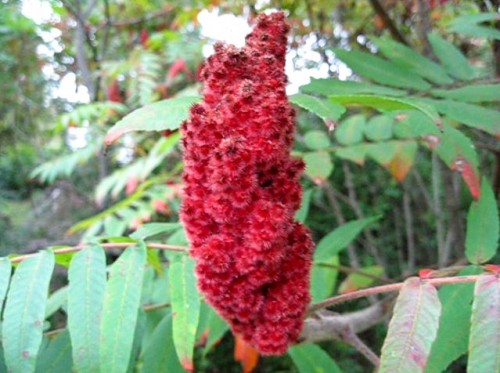Wild Foraging Series Staghorn Sumac
Article from: September 26th, 2012
Another wild edible plant of North America is the Staghorn Sumac, also known as Rhus Typhina, which belongs to the cashew family. This plant ranges from a shrub to smallish tree, up to about 15 feet high.

Identify The Staghorn Sumac
The Sumac is another plant that was used by native American Indians for its medicinal properties. It has mostly fallen from the spotlight in modern times though.
The Staghorn Sumac can be recognized by its very hairy branches and fruit. The edible version has red fruit. There is a poison Sumac but it has white fruit.

Identify the hairy branches on the Staghorn Sumac
You can make a very nice tasting tea from the berries of the Sumac tree. The tea has a sweet and lemony taste, sort of like a lemon tea. As with any natural food, try just a tiny sip of it at first to be sure you are not allergic to it. You can also take a single berry in your mouth and chew off the outer flesh, spitting the seed out.
To make a tea out of the Sumac berries, steep them for 15 minutes in near boiling water and then drink. You can also soak them for a couple hours in cold water for a cold drink. Due to its lemony flavor, many suggest that it might contain vitamin C, but there are no nutritional tests to be easily found.

The fruit of the Staghorn Sumac
It has been claimed that the Sumac berries contain lots of antioxidants. The tea has traditionally been used to treat sore throats, female disorders, tonsillitis, worms and for colds. Sumac may help fight blood sugar problems as well.
You can watch today's video here:
 Wild Foraging Series - Staghorn Sumac - Rhus Typhina
Wild Foraging Series - Staghorn Sumac - Rhus Typhina
While you are over there please subscribe to my YouTube channel and follow our daily videos as we strive to become self sufficient and off the grid on a budget.
Feel free to ask any questions or get help with your project on our
About the Author
| Troy Reid |




